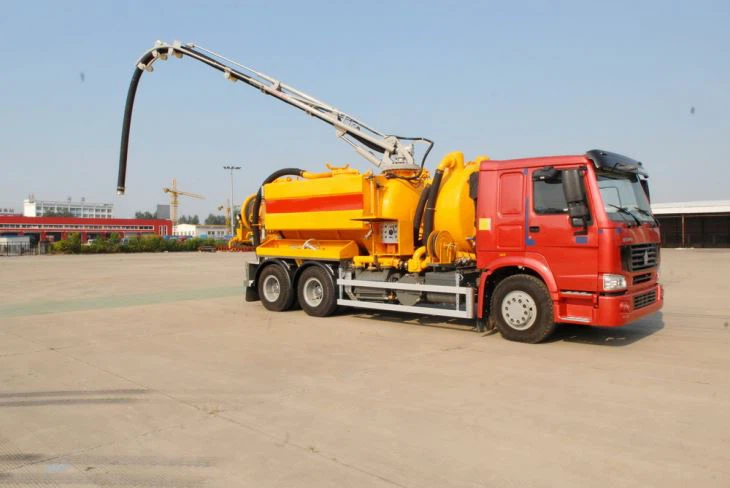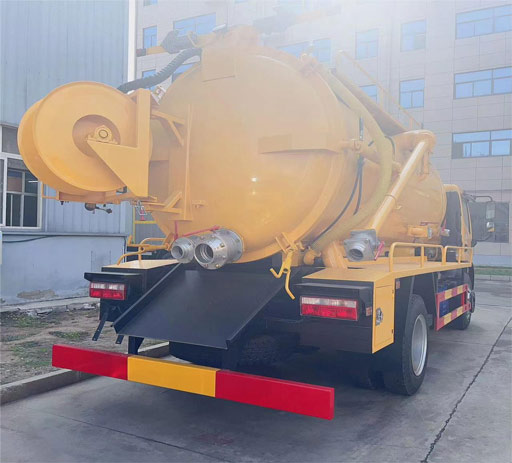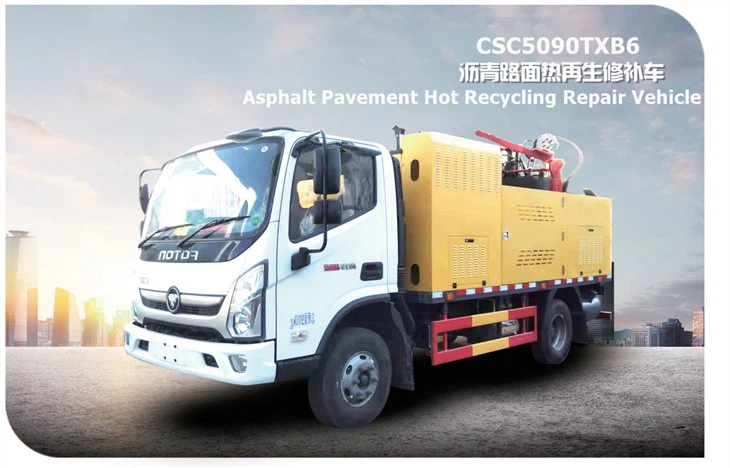Ultimate Guide to Slurry Trucks: Everything You Need to Know

Slurry trucks play a crucial role in various industries, notably in construction and mining. Their ability to transport liquid mixtures makes them indispensable for operations that require the movement of sludge, slurry, and other viscous materials. This article will delve into everything you need to know about slurry trucks, including their types, applications, maintenance, and more.
What is a Slurry Truck?
A slurry truck is a specialized vehicle designed to transport slurry—a mixture of solids and liquids. These trucks are often outfitted with tanks that can handle the unique challenges presented by transporting such mixtures. The goal is to efficiently move materials from one location to another while ensuring safety and minimizing environmental impact.
Types of Slurry Trucks
1. Vacuum Slurry Trucks
Vacuum slurry trucks utilize a vacuum system to suction up slurry from a site. They are highly effective in cleaning up after spills or excavating material from pits. These trucks often feature a large tank that holds the extracted slurry, which can later be disposed of or processed.
2. Agitator Slurry Trucks
Agitator slurry trucks are equipped with stirring mechanisms that keep the slurry mixed during transport. This is crucial for preventing settling, which can lead to clogs and uneven distribution when offloading. They are particularly useful for transporting cement slurries or other heavy mixtures.
3. Tanker Slurry Trucks
Tanker slurry trucks are specifically designed with large tanks to carry various types of slurries. They come with different tank sizes and configurations to meet the needs of different projects and can be customized for specific materials.
Applications of Slurry Trucks
Slurry trucks are versatile and find applications across multiple industries.
1. Construction
In construction, slurry trucks are often used to transport cement mixtures, soil stabilization products, and waste materials from demolition sites. They facilitate efficient movement, ensuring projects remain on schedule.
2. Mining
Mining operations frequently use slurry trucks to transport tailings and sludge generated during extraction processes. These trucks help minimize the environmental impact of mining by effectively managing waste materials.
3. Environmental Services
Slurry trucks are essential in environmental cleanup efforts. They are employed to remove contaminated soil and liquids, supporting remediation projects and hazardous waste management.
4. Agriculture
In agriculture, slurry trucks are used to transport and apply liquid fertilizers or slurry from livestock operations. Their design allows them to evenly distribute nutrients across fields, enhancing crop growth.
How Slurry Trucks Work
Understanding how slurry trucks operate is essential for effectively utilizing them in various applications.
1. Loading Process
The loading process typically involves connecting the truck to a source of slurry or using the vacuum system to suck up the mixture. It’s crucial to monitor the viscosity to ensure smooth loading.
2. Transport
During transport, the tank’s contents must be agitated (for agitator trucks) or monitored (for vacuum trucks) to prevent settling. Proper driving techniques, such as gradual acceleration and braking, can help maintain the slurry’s homogeneous state.
3. Unloading Process
The unloading process requires careful management to avoid spills and clogs. Many slurry trucks feature pumps or gravity-fed systems to efficiently dispense the slurry at the destination.
Maintenance of Slurry Trucks
Regular maintenance is crucial to ensure the operational efficiency and longevity of slurry trucks.
1. Routine Inspections
Conduct routine inspections of the tank and hoses for wear and tear. Look for leaks or cracks that could lead to potential spills or equipment failure.
2. Cleaning
After each use, thoroughly clean the tank and components to prevent residue buildup, which can lead to corrosion and other maintenance issues.
3. Fluid Checks
Check the fluid levels in the vacuum and hydraulic systems regularly. Maintaining proper fluid levels is crucial for optimal operation.
4. Tire and Brake Maintenance
As with any vehicle, keep an eye on tire tread wear and ensure brakes are functioning correctly to maintain safety and efficiency.
Safety Precautions When Using Slurry Trucks

Safety should always be a top priority when operating slurry trucks. Implement these precautions:
1. Personal Protective Equipment (PPE)
Always wear appropriate PPE, such as gloves, goggles, and protective clothing, especially when dealing with hazardous materials.
2. Training
Ensure that all operators are properly trained in handling slurry trucks, including loading and unloading procedures, to minimize the risk of accidents.
3. Emergency Protocols
Implement emergency protocols in case of spills or equipment failure. Operators should be familiar with the correct procedures to follow to mitigate risks.
Cost Factors for Slurry Trucks

The cost of slurry trucks varies significantly based on several factors. Here are key considerations:
1. Type of Truck
Differently configured trucks have varying price ranges. For instance, specialized agitator trucks often cost more than standard vacuum trucks due to their intricate systems.
2. Size and Capacity
The size of the tank can significantly influence the overall cost. Larger tanks typically cost more, but they can also increase efficiency on larger projects.
3. Features and Customization
Trucks with additional features, such as advanced agitation systems or enhanced safety features, may carry higher costs. Customization for specific uses also impacts pricing.
4. Maintenance and Operating Costs
Consider ongoing costs such as fuel, maintenance, and repair needs when budgeting for a slurry truck. Regular maintenance is crucial for ensuring long-term reliability.
Practical Tips for Choosing the Right Slurry Truck
Selecting the right slurry truck for your needs can make a big difference in efficiency and productivity. Here are some practical tips:
1. Assess Your Specific Needs
Evaluate the type of slurry you’ll be transporting, the volume required, and the distance involved. This assessment will guide your choice of truck type and configuration.
2. Research Available Options
Look into various manufacturers and models available in the market. Compare features, prices, and customer reviews to identify your best options.
3. Consider Second-Hand Options
If budget constraints are an issue, consider purchasing a used slurry truck. Ensure to assess its condition and history to avoid future maintenance issues.
4. Consult Industry Experts
Don’t hesitate to consult with industry experts for guidance on selecting the right truck. Their experience can provide valuable insights into functionality and potential issues.
Frequently Asked Questions (FAQ)
1. What is the average lifespan of a slurry truck?
The average lifespan of a slurry truck can range from 10 to 15 years, depending on usage, maintenance, and operating conditions.
2. How do I maintain the slurry consistency during transport?
Use agitator trucks designed to keep the slurry mixed during transport. Additionally, monitor driving conditions to avoid sudden jolts that may affect consistency.
3. Are slurry trucks environmentally friendly?
When used correctly, slurry trucks can aid in environmental protection by managing waste material effectively and reducing spills during transport.
4. What are the key features to look for in a slurry truck?
Key features include tank size, agitation systems, safety equipment, and customization options to meet specific transportation needs.

5. Can I rent a slurry truck instead of purchasing one?
Yes, several companies offer slurry truck rentals. This option can be cost-effective for short-term projects or emergencies.
6. What kind of materials can be transported in a slurry truck?
Slurry trucks can transport a wide range of materials, including cement mixtures, wastewater, agricultural slurry, and industrial sludge.
